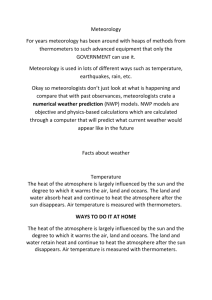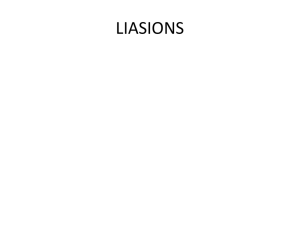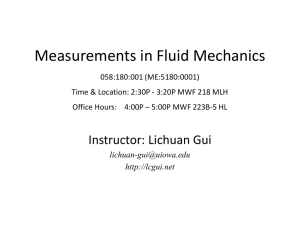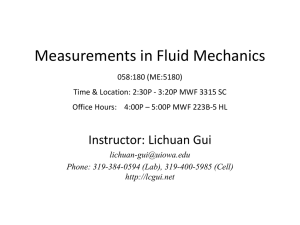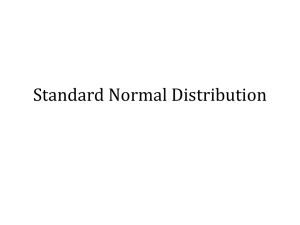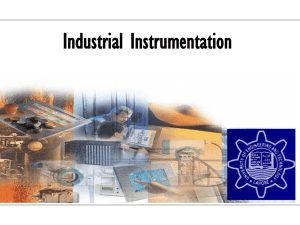Teacher notes and student sheets
advertisement
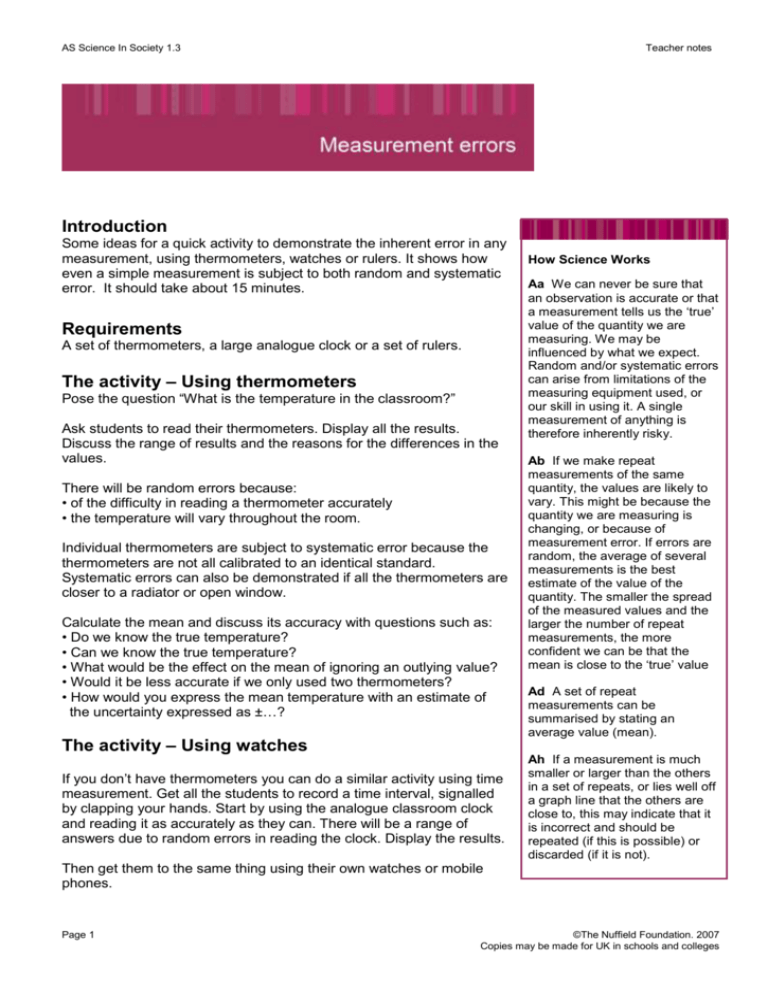
AS Science In Society 1.3 Teacher notes Introduction Some ideas for a quick activity to demonstrate the inherent error in any measurement, using thermometers, watches or rulers. It shows how even a simple measurement is subject to both random and systematic error. It should take about 15 minutes. Requirements A set of thermometers, a large analogue clock or a set of rulers. The activity – Using thermometers Pose the question “What is the temperature in the classroom?” Ask students to read their thermometers. Display all the results. Discuss the range of results and the reasons for the differences in the values. There will be random errors because: • of the difficulty in reading a thermometer accurately • the temperature will vary throughout the room. Individual thermometers are subject to systematic error because the thermometers are not all calibrated to an identical standard. Systematic errors can also be demonstrated if all the thermometers are closer to a radiator or open window. Calculate the mean and discuss its accuracy with questions such as: • Do we know the true temperature? • Can we know the true temperature? • What would be the effect on the mean of ignoring an outlying value? • Would it be less accurate if we only used two thermometers? • How would you express the mean temperature with an estimate of the uncertainty expressed as ±…? The activity – Using watches If you don’t have thermometers you can do a similar activity using time measurement. Get all the students to record a time interval, signalled by clapping your hands. Start by using the analogue classroom clock and reading it as accurately as they can. There will be a range of answers due to random errors in reading the clock. Display the results. How Science Works Aa We can never be sure that an observation is accurate or that a measurement tells us the ‘true’ value of the quantity we are measuring. We may be influenced by what we expect. Random and/or systematic errors can arise from limitations of the measuring equipment used, or our skill in using it. A single measurement of anything is therefore inherently risky. Ab If we make repeat measurements of the same quantity, the values are likely to vary. This might be because the quantity we are measuring is changing, or because of measurement error. If errors are random, the average of several measurements is the best estimate of the value of the quantity. The smaller the spread of the measured values and the larger the number of repeat measurements, the more confident we can be that the mean is close to the ‘true’ value Ad A set of repeat measurements can be summarised by stating an average value (mean). Ah If a measurement is much smaller or larger than the others in a set of repeats, or lies well off a graph line that the others are close to, this may indicate that it is incorrect and should be repeated (if this is possible) or discarded (if it is not). Then get them to the same thing using their own watches or mobile phones. Page 1 ©The Nuffield Foundation. 2007 Copies may be made for UK in schools and colleges AS Science In Society 1.3 Teacher notes Display all the results. Discuss the range of results and the reasons for the differences in the values. You will get a set of high precision results from those with digital watches but are they all the same? There will still be random errors, mainly due to their own reflex time. Those using analogue watches will get results with less precision and more random error. Systematic errors will not show up over a short time interval. Calculate the mean and discuss its accuracy with questions such as: • Do we know the true time interval? • Can we know the true time interval? • What would be the effect on the mean of ignoring an outlying value? • How would you express the mean time interval with an estimate of the uncertainty expressed as ±...? The activity – Using rulers Get all the students to measure the length of the same object. The Science in Society textbook might be suitable if some students have them. Display the results. Discuss the range of results and the reasons for the differences in the values. There will be random errors because: • of the difficulty in reading a ruler accurately • the books themselves may not be identical. Individual rulers will be subject to systematic error because the rulers are not all calibrated to an identical standard. Calculate the mean and discuss its accuracy with questions such as: • Do we know the true length? • Can we know the true length? • What would be the effect on the mean of ignoring an outlying value? • How would you express the mean length with an estimate of the uncertainty expressed as ±… ? October 2007 Page 2 ©The Nuffield Foundation. 2007 Copies may be made for UK in schools and colleges
